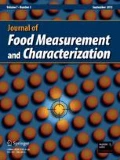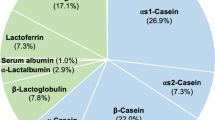Abstract
There is a growing demand for bread and other baked products that are gluten and wheat free due to the increased diagnosis and self-diagnosis of adverse reactions to wheat and gluten and an increase in the number of people who perceive a gluten or wheat free diet as a healthy lifestyle option. The removal of wheat from bread presents a number of technological challenges resulting in quality issues and nutrition. The increased consumer demand and growing industry response to these demands has meant that consumers will no longer accept compromise on taste or quality when purchasing gluten and wheat free bread. There is little information available that demonstrates customers’ expectations in terms of quality of gluten and wheat free breads. The aim of this research was to establish whether gluten and wheat free breads currently on the market are meeting consumer expectations and if not the key areas for product improvement and new product development. The research indicates that there are still significant improvements needed to produce gluten and wheat free bread that meets consumer expectations.







Similar content being viewed by others
References
E.K. Arendt, C.M. O Brien, T.J. Schober, E. Gallagher, T.R. Gormley, Development of gluten-free cereal products. Farm Food 12(2), 21–27 (2002)
F. Battais, C. Richard, S. Jacquenet, S. Denery-Papini, D.A. Moneret-Vautrin, Wheat grain allergies: an update on wheat allergens. Eur. Ann. Allergy Clin. Immunol. 40(3), 67–76 (2008)
S.P. Cauvain, L.S. Young, Technology of Breadmaking, 1st edn. (Blackie Academic Press, London, 1998)
L.J. Chartrand, P.A. Russo, A.G. Duhaime, E.G. Seidman, Wheat starch intolerance in patients with celiac disease. J. Am. Diet. Assoc. 97(6), 612–619 (1997)
C.S. Hathorn, M.A. Biswas, P.N. Gichuhi, A.C. Bovell-Benjamin, Comparison of chemical, physical, micro-structural, and microbial properties of breads supplemented with sweetpotato flour and high-gluten dough enhancers. LWT-Food Sci. Technol. 41(5), 803–815 (2008)
R.L. Heiniö, Sensory attributes of bakery products, in Bakery Products, 1st edn., ed. by Y.H. Hui (Blackwell Publishing, New York, 2007), pp. 285–298
L. Heller, Commercial aspects of gluten free products, in Gluten-Free Food Science and Technology, ed. by E. Gallagher (Wiley-Blackwell, Oxford, 2009), pp. 99–106
A. Houben, A. Höchstötter, T. Becker, Possibilities to increase the quality in gluten-free bread production: an overview. Eur. Food Res. Technol. 235(2), 195–208 (2012)
M. Laureati, B. Giussani, E. Pagliarini, Sensory and hedonic perception of gluten-free bread: comparison between celiac and non-celiac subjects. Food Res. Int. 46(1), 326–333 (2012)
P. Marian, Category Crunch: the rise and fall of gluten free foods in the UK, just-food (2011). www.just-food.com
M. Mariotti, M. Lucisano, M. Ambrogina Pagani, P.K.W. Ng, The role of corn starch, amaranth flour, pea isolate, and Psyllium flour on the rheological properties and the ultrastructure of gluten-free doughs. Food Res. Int. 42(8), 963–975 (2009)
H. McGee, On Food and Cooking: The Science and Lore of the Kitchen, 2nd edn. (Scribner, New York, 2007)
Mintel. (2011). Meat Free and Free From Food UK - September 2011: Mintel
Mintel. (2012). Bread and Baked Goods - UK - January 2012 (Market Intelligence): Mintel
M.M. Moore, T.J. Schober, P. Dockery, E.K. Arendt, Textural comparisons of gluten-free and wheat-based doughs, batters and breads. Cereal. Chem. J. 81(5), 567–575 (2004)
H. Stone, J.L. Sidel, Sensory Evalaution Practices, 3rd edn. (Elsevier, New York, 2004)
T. Thompson, M. Dennis, L.A. Higgins, A.R. Lee, M.K. Sharrett, Gluten-free diet survey: are Americans with coeliac disease consuming recommended amounts of fibre, iron, calcium and grain foods? J. Hum. Nutr. Diet. 18(3), 163–169 (2005)
Acknowledgments
The authors would like to express their gratitude to Hero Food UK Limited for supporting this project.
Author information
Authors and Affiliations
Corresponding author
Rights and permissions
About this article
Cite this article
Potter, R., Stojceska, V. & Plunkett, A. An investigation of the consumer perception on the quality of the gluten and wheat free breads available on the UK market. Food Measure 8, 362–372 (2014). https://doi.org/10.1007/s11694-014-9199-y
Received:
Accepted:
Published:
Issue Date:
DOI: https://doi.org/10.1007/s11694-014-9199-y




